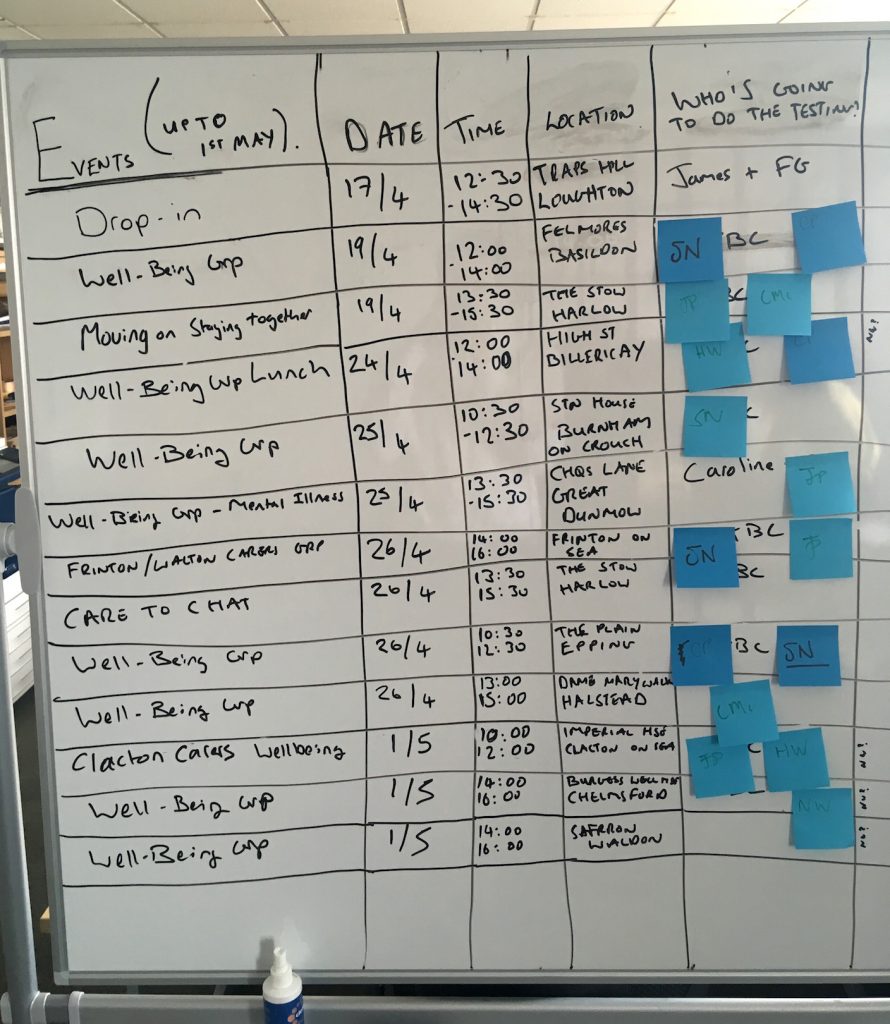Over the past few weeks, the content designers on the Service Design team have been rewriting parts of the Essex County Council websites.
Content design is a relatively new discipline. But it’s born out of some very old techniques: research, writing and editing. It’s about trying to understand what people are looking for, and working out how best to communicate that, in the most economical way possible.
Here’s what the Government Digital Service say about it:
“Good content design allows people to do or find out what they need to from government simply and quickly.”
To rewrite the content in a way that does this means you have to understand your users. What they’re looking for, what problems they’re trying to solve, and what language they use: that sort of thing.
And once you’ve written it, you have to get it in front of the people who will use it.
There’s a number of different methods you can use - sending out surveys over email, speaking to people in person, visiting their houses. But they all require one thing. People to talk to.
Getting in front of our users
In a perfect world we’d have a database of willing subjects, from all the different target audiences, neatly segmented and ready to talk to.
But things don’t always go that way!
The truth is, over the course of this project we’ve found it difficult to recruit users to test with. There’s issues around recruitment; permissions and just the practicalities of how to reach people.
There’s also the challenge of quantity. If you have 10 pages to review, and you want at least 5 people to review each page, that’s 50 sets of eyes you’ve got to find. And you may have specialist user requirements: people with dementia, or blue badge users to find. It all adds up.
So this is what we’ve done. We’ve recruited people to test with by working with:
- Where relevant, Essex County Council staff - for example, for the carers content we spoke to people from the employee Carers Forum
- Friends and family
- Carers groups
- Charities

Doing the detective work
We’ve gone on the road, visiting carers groups across the county and we’ve explored County Hall.
Through pooling contacts and working with internal and external teams we’re now on track to have sufficient users to review our content. It’s a process that’s a bit rough round the edges, and it’s not perfect. But it’s helping us quickly get a better understanding of what works and what doesn’t.
As well as having access to the magical library of willing users to test on, as a writer or page owner it can also be tempting to think that once you’ve written the pages, you can pass it in front of people, make some minimal changes, and then publish the content. Again, it doesn’t - and shouldn’t - work like that.
Closing the gap
There’s always a gap between what you think is right and what actually works for the user. Getting the material in front of them helps find this, and hopefully minimise that gap.
Testing content with users often helps keeps you on your toes, and it can help make positive, substantive changes quickly. Like when a user points out that the 2nd, 3rd and 4th paragraphs of a page weren’t strictly necessary: changing a 300 word page to a much more readable 150 word in one swift cut. Or when an eighty year old pulls you up on bad grammar. Sometimes, there’s nothing better than getting out there and showing the work.
Everyone from the service design team has pitched in to suggest contacts who’d be willing guinea pigs. And lots of staff within Essex County Council have been very generous with their time. So thanks for everyone who’s been involved: it’s been a team effort.
If you'd like to get involved in user testing or have other ideas for how we can reach the right people and broaden our range of people to test with, please do get in touch. You can email us on service.design@essex.gov.uk
Leave a comment